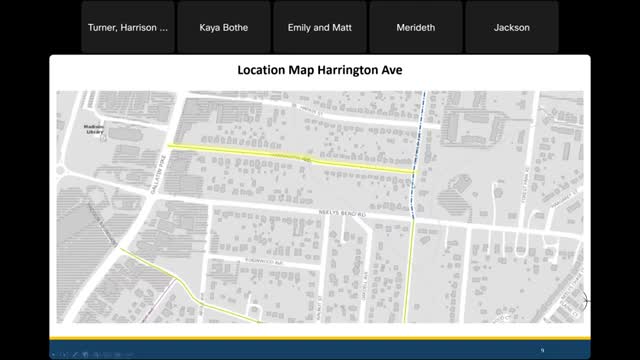City plans innovative speed reduction measures for safer streets
August 05, 2024 | Nashville Department of Transportation (NDOT) Meetings, Nashville, Davidson County, Tennessee

This article was created by AI summarizing key points discussed. AI makes mistakes, so for full details and context, please refer to the video of the full meeting. Please report any errors so we can fix them. Report an error »

In a recent government meeting, officials discussed strategies to reduce vehicle speeds on local streets, focusing on the implementation of various traffic calming measures. The conversation highlighted the need for safer roadways, particularly on straight streets that tend to encourage faster driving.
Key proposals included the installation of speed cushions, which are modular, rubberized devices designed to slow down vehicles while minimizing the impact on emergency response vehicles. These cushions, measuring approximately three inches in height and six feet in width, have proven effective in previous installations, reducing average speeds from 31 mph to 22 mph and the 85th percentile speed from 34-37 mph down to 25 mph.
In addition to speed cushions, the meeting outlined other tools in the traffic calming toolkit, such as speed tables, radar feedback signs, and pavement markings. Speed tables, which span the entire width of the lane, also serve to lower speeds but are less preferred due to their potential impact on emergency vehicles. Radar feedback signs provide real-time speed information to drivers, resulting in an average speed reduction of about six mph.
Further measures discussed included narrowing roadways with white edge lines, implementing bulb outs at intersections to enhance pedestrian visibility, and creating chicanes to introduce horizontal deflection that slows down traffic. Traffic circles were also proposed for wide intersections to encourage slower driving.
The proposed concept for Harrington Avenue includes the installation of five sets of speed cushions strategically placed between stop signs to maintain a consistent slower speed throughout the roadway. The design aims to balance the need for traffic flow with safety considerations.
Officials welcomed questions and feedback on the proposed measures, emphasizing the importance of community input in enhancing road safety.
Key proposals included the installation of speed cushions, which are modular, rubberized devices designed to slow down vehicles while minimizing the impact on emergency response vehicles. These cushions, measuring approximately three inches in height and six feet in width, have proven effective in previous installations, reducing average speeds from 31 mph to 22 mph and the 85th percentile speed from 34-37 mph down to 25 mph.
In addition to speed cushions, the meeting outlined other tools in the traffic calming toolkit, such as speed tables, radar feedback signs, and pavement markings. Speed tables, which span the entire width of the lane, also serve to lower speeds but are less preferred due to their potential impact on emergency vehicles. Radar feedback signs provide real-time speed information to drivers, resulting in an average speed reduction of about six mph.
Further measures discussed included narrowing roadways with white edge lines, implementing bulb outs at intersections to enhance pedestrian visibility, and creating chicanes to introduce horizontal deflection that slows down traffic. Traffic circles were also proposed for wide intersections to encourage slower driving.
The proposed concept for Harrington Avenue includes the installation of five sets of speed cushions strategically placed between stop signs to maintain a consistent slower speed throughout the roadway. The design aims to balance the need for traffic flow with safety considerations.
Officials welcomed questions and feedback on the proposed measures, emphasizing the importance of community input in enhancing road safety.
View full meeting
This article is based on a recent meeting—watch the full video and explore the complete transcript for deeper insights into the discussion.
View full meeting
